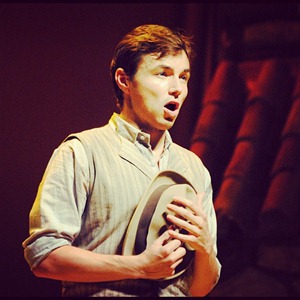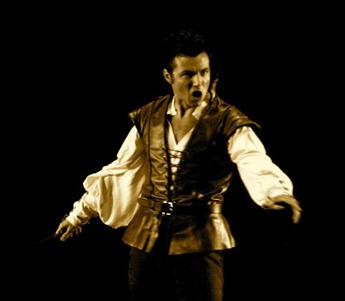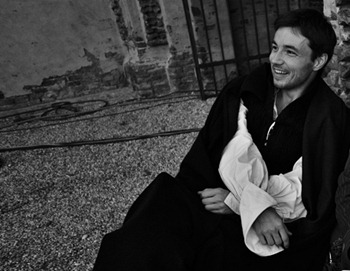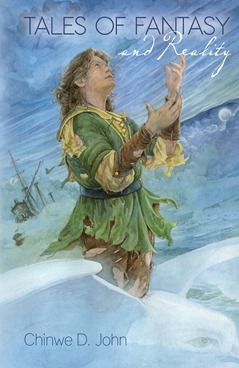![Sébastien Guèze as Gounod's Roméo at FGO [Photo by Gastón de Cárdenas, FGO] Sébastien Guèze as Gounod's Roméo at FGO [Photo by Gastón de Cárdenas, FGO]](http://lh3.ggpht.com/-7xyK4MAHzY0/UE_n3MlDJ8I/AAAAAAAABDU/ozvon9QPpbc/Gueze_Romeo_FGO_Gaston_de_Cardenas6.jpg?imgmax=800)
It was with a performance of Charles Gounod’s Faust that the Metropolitan Opera was launched on 22 October 1883. This opening performance was sung in Italian translation rather than in Gounod’s French, but an important hallmark in the first half-century in the history of the MET was the establishment and maintenance of national ‘wings’ of performance. During the first few decades of the Twentieth Century, the MET’s ‘French wing’ brought to performances of French repertory the work of the greatest French-speaking artists, combining idiomatic singing, conducting, and direction for performances than transported audiences from Broadway to the Champs-Élysées. The early Twentieth Century was also a veritable Belle Époque for the native music of France, where traditions refined by the Opéra and Opéra Comique in the previous century blossomed into an unique musical culture that coincided with the dawn of recording technology. The voices of Pol Plançon, Maurice Renaud, Victor Maurel, Marcel Journet, Yvonne Gall, and Emma Calvé epitomized the best of the Gallic school of singing in the early decades of the Twentieth Century. In 1924, the Opéra welcomed Georges Thill, a tenor who for many audiences and listeners represented the zenith of French singing, his repertory spanning many of the great works of the French repertoire as well as Puccini roles and Wagner’s Lohengrin. After Thill’s retirement, however, French repertory increasingly fell victim to the internationalization of opera. While French repertory continued to delight and move audiences in all the world’s opera houses, performances were more and more frequently entrusted to singers with non-native French. By the 1970s, many audiences and critics would hail Alfredo Kraus—a Spaniard with Austrian parentage—as the finest ‘French’ tenor on the international circuit, highlighting the extent to which opera had become an ‘international’ genre, largely discarding the national ‘wings’ and traditional schools of singing that had flourished in the prior century. There were in the gifted and supremely elegant Léopold Simoneau and Alain Vanzo guardians of the golden standard of French singing, however, and—not unlike Alfredo Kraus—they both sang with reliable style and tonal beauty throughout their careers. When both Simoneau and Vanco passed away in the first decade of the new millennium, it seemed that the tradition of honeyed, heady French tenor singing inherited from the formidable artists of the Nineteenth Century was consigned to extinction. Anyone who has heard the young tenor Sébastien Guèze during the past few years rejoices that the endangered species of French tenors has at least one savior, a singer whose voice reminds listeners of the glories of French singing of the past.
Born in Lyon, Sébastien Guèze studied music while also working to earn a Masters Degree in International Business. After making the decision to devote himself exclusively to music, Mr. Guèze entered the prestigious Conservatoire de Paris, where his studies prepared him for a career in opera by exposing him to all aspects of music-making. ‘It was a little different [than some music programs],’ Mr. Guèze recollects. ‘We did more general skills, not specifically opera roles, but also mélodies, Lieder, chorus, theatre…including all the periods. It’s not like a [young artists] program in an opera house, where you are a part of each production. It’s a general school of teaching, with, of course, each year one [operatic] production!’ This, Mr. Guèze feels, was crucial to his development as an artist. ‘It’s in this way that [I] learned a more global vision of the different music possibilities,’ he says. ‘You start [as a] generalist, [and] the next step is to become a specialist!’
It is interesting to note that, when reminiscing about the singers whose work inspired his interest in opera, Mr. Guèze mentions no French singers. ‘I discovered opera with ‘Con te partiro’ by Andrea Bocelli!’ he laughs. ‘Thanks a lot [to] the crossover!’ [In a tenuous nod to his influence on Mr. Guèze, it is interesting to note that, in the coming months, DECCA will release CD and DVD recordings of a production of Gounod’s Roméo et Juliette featuring Mr. Bocelli.] His appetite for opera whetted, he next encountered the marketing juggernaut that introduced many people throughout the world to tenor singing: The Three Tenors. After Pavarotti, Domingo, and Carreras, Mr. Guèze turned to the historical models of Franco Corelli and Mario del Monaco, supplemented by the more recent examples of Roberto Alagna, Rolando Villazón, and Jonas Kaufmann. ‘One who is killing me every time [is] Fritz Wunderlich,’ Mr. Guèze confides.
The singers whose performances have influenced Mr. Guèze reflect the international nature of opera in the Twenty-First Century. Despite his youth, Mr. Guèze is keenly aware of his place in the lineage of French artists, as well as the demands and expectations of pursuing an international career as an opera singer. ‘Of course, I feel very comfortable singing in French, more close [to the text], playing on each word,’ he shares. ‘In French [repertory], I have some roles that I feel so strong inside me. I don’t know why, especially because I don’t want to sing [them] today or tomorrow, but they are here—like Werther.’ Mr. Guèze first captured the notice of opera lovers throughout the world when he sang Gounod’s Roméo opposite the Juliette of acclaimed Georgian soprano Nino Machiadze in a broadcast performance at Amsterdam’s Concertgebouw, a performance that announced the arrival of a beautiful, genuinely French tenor voice. Building on the momentum created by the reception of that performance, Mr. Guèze acknowledges that he has been fortunate in his career to date in terms of realizing artistic goals. ‘I [have] sung most of the roles that I wanted to do: Roméo, Faust, the Duca in Rigoletto, Lenski in Yevgeny Onegin, Pinkerton in Madama Butterfly, and Alfredo in La Traviata,’ he says. Nemorino in L’Elisir d’Amore is a favored role because, as Mr. Guèze characterizes it, he has the opportunity ‘just to be crazy and have a lot of fun on stage!’ Recent performances of L’Elisir d’Amore in São Paulo, Brasil, found Mr. Guèze on brilliant form, winning ovations from audiences and words of praise from critics. In choosing which roles to sing, Mr. Guèze is very attentive to maintaining a careful balance during each season. ‘I try to find a mix to keep the flexibility of the voice and my mind fresh,’ he says. His goals for each season are specific but logical: ‘four or five productions with different roles that I [have] already sung; one creation [of a new role] or a forgotten opera (finding forgotten pieces is my second passion); and one or two new roles from the repertory (bel canto or Romantic period).’ He acknowledges, though, that he cannot always exercise complete control over his realization of these goals. ‘There is no rule!’ he laughs, noting that the role that he has sung most often in his career to date is Rodolfo in Puccini’s La Bohème. His performances of Rodolfo in Graham Vick’s production of Bohème for Greek National Opera garnered rave reviews in the European press, further establishing him as a singer that audiences are excited to hear.

The challenges of an international career are also apparent to Mr. Guèze, who works to adapt his artistry to the realities of being in demand throughout the world. ‘Now with the airplane,’ he reflects, ‘you are singing one day in Europe and the next day in the USA! Specifically when the role is very intense, I know that sometimes I am doing too much; too much in the season with some last-minute calls. But I love that, I love the stage, the improvisation, being surprised and reacting every second to find the best solution.’ Reflecting on his transition from an intended career in international business to one as a singer, he says, ‘I was a singer by accident, so I am just taking the bonus. So, I conclude that I’ll be a lion, and when it [is] enough, I will do something else!’ Even for a singer as gifted as Mr. Guèze, tackling the challenges of a career as an artist came with a learning curve. ‘At the beginning, I tried to protect myself,’ he says, ‘but I was sad, loosing my motivation.’ These feelings are swept away by the joys of singing. ‘When you are on stage and the time is suspended, stopped, you can do everything. You feel the maestro and the orchestra totally with you, without anyone looking; the audience in a beautiful silence of listening, impatient. That’s magic, and I think that’s why people love opera so intensely when they taste these kinds of moments!’
These moments are impossible without a firm technical foundation, and Mr. Guèze takes the development of his technique very seriously. His seriousness does not preclude enjoyment of the art of singing, however. Asked to summarize his approach to the technical aspects of singing, he responds with typical frankness and humor. ‘When I am a sweet boy studying, I’ll tell you flexibility and sun. But when I am on stage, passion and cinema!’ Instruction is very important but must also be approached with a degree of caution, he suggests. ‘Listening to all [the] teachers and different techniques in the world is good,’ Mr. Guèze opines, ‘but each body, each face, each person is different, so [you must] find your own way. A good teacher is not a guru, just a friend giving his hand when you need it.’
A performance by Mr. Guèze is a display of the essence of opera. Not surprising in a native Frenchman are his clear diction and attention to text, regardless of the language in which he sings. What is exceptional in a singer of any nationality is the beauty of his voice throughout his range, from a burnished lower register that suggests power in reserve for roles like Werther in future to a gleaming, floating upper register that seems to have been distilled from Mediterranean sunlight. Though still in the early seasons of what seems certain to be a long and uncommonly distinguished career, Mr. Guèze possesses the kind of technical assurance, emotional engagement, and self-cognizance that are necessary for longevity in the business of singing. Most importantly, perhaps, is Mr. Guèze’s enjoyment of his vocation.

‘At the end [of a performance], there is no book, no sculpture, no painting, just a [series] of vibrations that came and left,’ Mr. Guèze says of opera. ‘It’s a curious form of art!’ The audience is as much a part of a performance as the artists on stage, he feels. ‘To be [a] spectator is to take part in it,’ he shares. ‘Seeing and imagining our own lives through the story…we are coming for that, to dream and to remember that our souls are part of humanity.’ This shared experience is an aspect of opera that Mr. Guèze finds very rewarding. ‘Everybody can feel it, from the audience to the stage. It’s starting full of fears, and—like the phoenix—at the end everybody feels alive.’
Achieving this sense of life and fears overcome is the most vital element of Mr. Guèze’s artistic endeavor. Whether enacting comedy or tragedy, he has been recognized by critics for the directness and emotional truth of his performances, and this is a gratifying validation of Mr. Guèze’s personal philosophy of performing opera. ‘It’s not about small or big,’ he reflects. ‘It’s doing something true! All your ideas must have an origin and an issue. If your soul feels it, your body will feel it, and your heart will send it to the audience. For me, this is the key of the presence on the stage.’ Mr. Guèze responds adroitly to the efforts of opera directors to increase the ‘relevance’ of opera by updating the settings of major-repertory operas to times and places more familiar to modern audiences. ‘The secret of a magical performance is in the emotion,’ Mr. Guèze suggests, ‘so I can understand that you want to make a modern set to change things since the last productions and to create a new point of view, but the leading idea must be shaped by the question, How will we give smiles and tears?’ He feels that updating an opera’s setting without a valid emotional perspective drawn from the score itself is a dangerous and potentially damaging undertaking. ‘If it’s helping to have a new set, why not?’ he says. ‘Let’s go! But if it’s just to create sensation by provocations, it will only work for five minutes, and so what if that is the only [thing] that you have to say? Give me depth and not an easy, superficial work!’
‘When I go to see an opera, I like to see a show like a movie,’ Mr. Guèze says. It is important, though, that the music be the source of the spectacle. ‘I invent nothing,’ he says of his dramatic instincts. ‘It’s very logical! How can I give something that I don’t have?’ What Mr. Guèze has is a dedication to the art of singing that is refreshing, whether pursuing repertory in his native language or the major roles in other languages. It is rare to encounter a Rodolfo in La Bohème who both possesses the voice for the role and displays an emotional sincerity that suggests that he might well be a poet and a young lover on the brink of starvation. His easy command of the musical idioms of his native country mark him as a legitimate savior of the waning art of French singing, and for this alone he is an artist whose performances are gifts to those who lament the decline of the French school of singing. Whatever the provenance of the music that he sings, Mr. Guèze identifies as his great challenge in singing the drive ‘to give the shiver every day, every time.’ He says that, in his view, opera is a curious art because, at the end of a performance, nothing tangible, nothing lasting has been created. In the case of a performance by Sébastien Guèze, this is not true. Anyone who hears him carries a lasting memory of having heard something wonderful.

The author is deeply indebted to Mr. Guèze for his kindness, candor, and great humor in responding to questions for this article. All photographs are used with Mr. Guèze’s permission.
To learn more about Sébastien Guèze’s career and find information about upcoming performances, please click here to visit Mr. Guèze’s beautifully-designed website.

